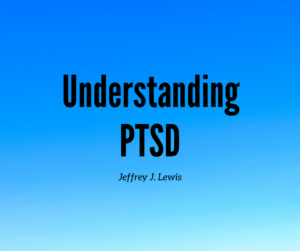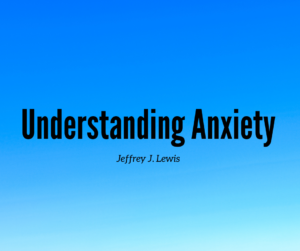
Understanding PTSD
Understanding PTSD is the first step in recovering from it. PTSD is an acronym for Post-Traumatic Stress Disorder. Many people however, prefer not to call it a “disorder” because that’s not really what it is. I don’t consider it a disorder either. Actually, I see it as the emotional after-effects of a highly traumatic experience… often perceived to be life-threatening.
In the United States there are an estimated 8 million people who suffer from PTSD in a given year. That’s about 3.5% of the total population. It can be caused by a number of things such as:
War, Terrorist Attacks, Physical Assault or Violence, Sexual Assault, Witnessing another person get hurt, Community Violence or Domestic Violence. It can also be caused by a Car Accident, Falls, Natural Disasters, Animal Attacks, Near Drowning, Poisoning, Cancer or a Life-threatening illness. As you can see there are quite a number of things that can cause PTSD, so it’s no wonder so many people suffer from it.
None of us know what our emotional limits are. In the same way that some people have a higher tolerance for physical pain, some have a higher tolerance for emotional pain. However, we ALL have a limit to how much pain we can tolerate, whether it be physical or emotional. Unfortunately, the only way to find out what our limits are, is to exceed them. Sad but true.
common ptsd symptoms
When we have an experience that exceeds our emotional limits, we may also experience common symptoms such as:
- Difficulty sleeping or nightmares
- Frequent distressing memories or feeling like you’re reliving the event
- Avoiding things that remind you of that event
- Always nervous, on edge, or on guard
- Feeling overwhelmed or emotionally numb
- Feeling disconnected from or detached from other people
RELATED Side-effects CAN INCLUDE:
- Irritability and anger problems
- Blaming yourself/guilt
- Depression
- Anxiety
- Work or school issues
- Relationship difficulties
- Isolation
- Drinking or drug use
- Feelings of hopelessness, shame, grief or despair
- Phobias
- Panic Attacks
With such a wide range of potential symptoms and challenges, there is no such thing as a “quick fix” for PTSD. However, this doesn’t mean it can’t be effectively treated. As with many other types of emotional issues, recovery is a process, it takes time. The amount of time varies from person to person.
a CLOSER LOOK
To get a deeper understanding of PTSD we need to take a look at the T part and the S part. The T stands for “traumatic” or trauma. What exactly is a trauma? A trauma is typically something that happens very quickly and catches the person off guard. With no time to mentally prepare for the traumatic event, it exerts a shock or “over-load” to the emotional system. The emotional energy of that shock can linger for weeks, months, or even years.
Traumas come in all shapes and sizes. How they affect a person often depends upon their emotional maturity level. For example, a trauma to a child may be something as simple as losing a beloved pet, or seeing another child get hurt on the playground. As we mature, our awareness expands and our perspectives change. It takes a lot more to traumatize an adult than it does a child. Either way, trauma can happen to anyone at any age, and leave a strong emotional scar.
release the energy
Part of the healing process must include procedures for releasing the emotional energy of the experience. Hypnosis can be quite effective in bringing about this energetic release. Guided Imagery is another effective tool as well. In fact, it is often used in conjunction with hypnosis. Images and pictures are the language of the sub-conscious mind. By using these tools, a person can modify the details of the images of the traumatic event, thus disconnecting the emotional charge from the memory.
Another great tool for accomplishing this job is E.M.D.R., which is also an acronym that stands for Eye Movement Desensitization and Reprocessing. This method causes the powerful energy associated with the memory of a traumatizing event to be shared with other parts of the brain. So instead of all that energy being concentrated in only one part of the brain, it gets spread out, and becomes less concentrated. It’s like diluting a spoon-full of instant tea in a large glass of water instead of just a small cup of water. It makes it weaker, or less potent. More about EMDR .
the STRESS IS THE PROBLEM
The other part of the PTSD acronym we need to address is the “S” or Stress. Stress is really the essence, or root of the problem. For people with PTSD the stress never completely goes away. But what exactly is stress, and how can we alleviate it? The feeling we call stress is in reality a part of our automatic self-protection program. Our survival is its primary job.
Whenever we experience something that threatens our survival, our sub-conscious mind kicks into gear. It sends a signal to our bodies to prepare us to fight or to run. This is accomplished by triggering the release of two powerful chemicals, Adrenalin and Cortisol. The adrenalin increases our heartrate, breathing and blood pressure. Cortisol is a steroid hormone, also referred to as our “stress hormone”. This hormone increases our glucose (sugar) levels to give us a boost of energy.
The downside of cortisol is that it basically shuts down our immune system. People suffering from PTSD sometimes have a compromised immune system because of their higher levels of cortisol. This unfortunately makes them more vulnerable to infectious diseases. Our automatic response system is only meant to be activated on a short-term, as-needed basis. With people who have experienced a serious trauma, the automatic response system gets stuck in the “on” position. When this happens, the adrenalin and cortisol can unfortunately do more harm than good. So how do we get the stress response to shut off and go back to normal?
STRESS REDUCTION AND BEYOND
Fortunately, there are a number of highly effective ways to reduce stress. But when the stress originates inside your own brain by way of thoughts, memories, images, feelings and sounds, common stress-reduction methods can’t do a complete job. The best approach is to use a combination of the stress reduction methods, along with some more advanced, specialized methods… such as Hypnosis, NLP, EMDR and others.
Common stress-reduction methods may include physical exercise, meditation, yoga, tai chi, and breathing exercises. Such methods will address the physical stress in your body, but they can’t get at the TRUE cause of the stress. That cause includes those things mentioned in the paragraph above, that is – thoughts, memories, mental images, feelings and sounds. Modifying these internal triggers is the key to eliminating PTSD. I use a variety of specialized techniques for doing exactly that.
Also, unlike common “desensitization” methods where you are forced to re-experience your traumatic event over and over again, my methods don’t require it. Although those old-school methods can and do work, there are newer, better ways to get the job done. I have several methods for defusing the root cause of PTSD. There is no “one-size-fits-all” method because everyone is different. For this reason, I am trained and certified in multiple methods that have proven to be effective. PTSD does NOT have to be a life sentence.
The bottom line
Understanding PTSD and what it really is, provides a key stepping stone towards recovery. It can also help friends or family members of those who are suffering with PTSD by providing a better understanding of what they are experiencing. Remember, post-traumatic stress is NOT a disorder; it’s the emotional after-effects of a traumatic experience. The bottom line is that PTSD is a stress issue, and as such – it CAN be treated successfully.
